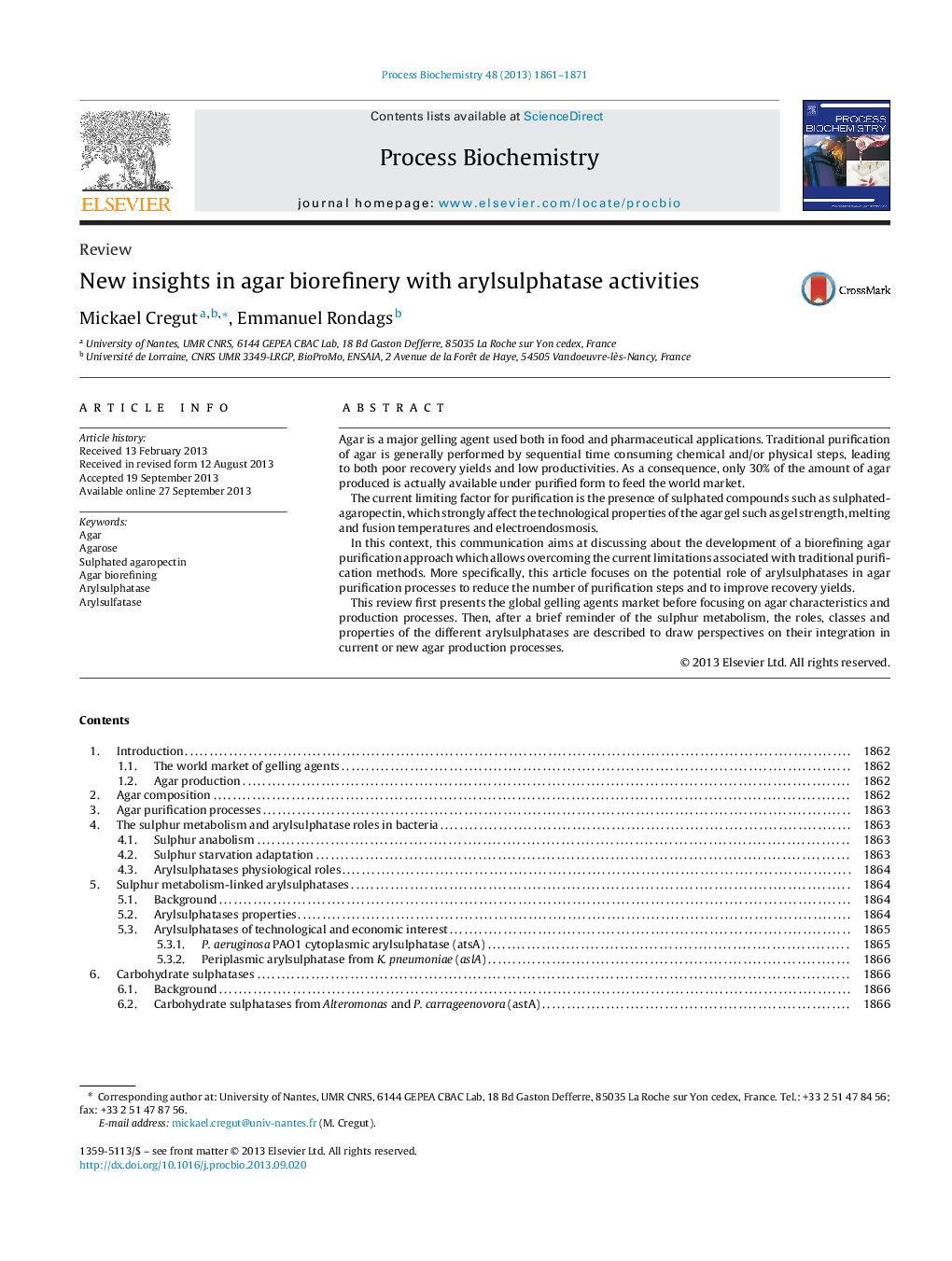| Article ID | Journal | Published Year | Pages | File Type |
|---|---|---|---|---|
| 34414 | Process Biochemistry | 2013 | 11 Pages |
•Review of traditional purification methods for agar refining.•Description of arylsulphatases physiological roles and technological properties.•Proposals for new opportunities in agar purification using these microbial catalysts.•Identification of key bottlenecks to solve for an efficient agar biorefining process.
Agar is a major gelling agent used both in food and pharmaceutical applications. Traditional purification of agar is generally performed by sequential time consuming chemical and/or physical steps, leading to both poor recovery yields and low productivities. As a consequence, only 30% of the amount of agar produced is actually available under purified form to feed the world market.The current limiting factor for purification is the presence of sulphated compounds such as sulphated-agaropectin, which strongly affect the technological properties of the agar gel such as gel strength, melting and fusion temperatures and electroendosmosis.In this context, this communication aims at discussing about the development of a biorefining agar purification approach which allows overcoming the current limitations associated with traditional purification methods. More specifically, this article focuses on the potential role of arylsulphatases in agar purification processes to reduce the number of purification steps and to improve recovery yields.This review first presents the global gelling agents market before focusing on agar characteristics and production processes. Then, after a brief reminder of the sulphur metabolism, the roles, classes and properties of the different arylsulphatases are described to draw perspectives on their integration in current or new agar production processes.
